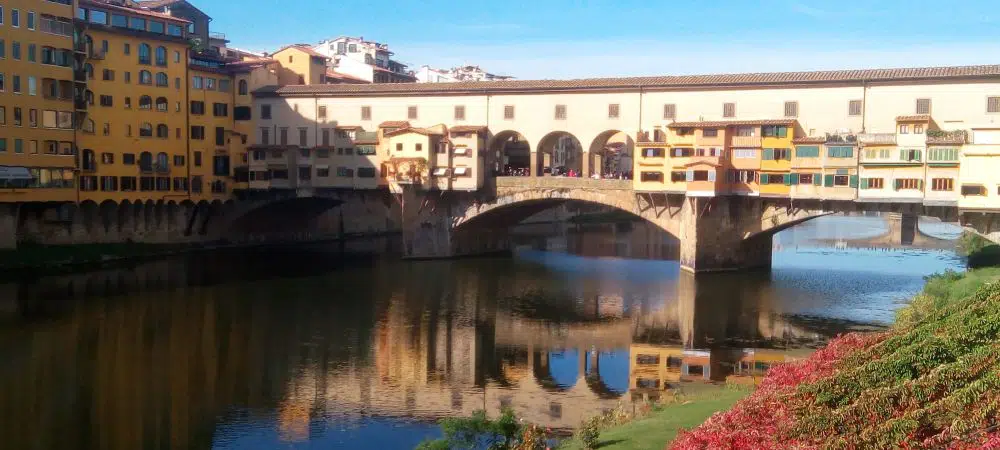
Land of artists and geniuses
Tuscany is a region with a concentration of beauty that has few rivals in the world. It is a territory where well-known identities coexist, largely formed in the city-state period of the Middle Ages. The Tuscan cities, large and small, offer beauties of culture and genius that it is impossible to summarize their characters.
Tuscany in the center of Italy
Located in the center of Italy, Tuscany borders with Liguria to the north-west, Emilia-Romagna to the north, Marches and Umbria to the east, Lazio to the south. To the west, the 397 km of its continental coasts are touched by two seas: the Ligurian one between Carrara and the Gulf of Baratti, and the Tyrrhenian between the promontory of Piombino and the mouth of the Chiarone river, which marks the border with Lazio.
Tuscany region, its landscape
The landscape of Tuscany is represented by fertile countryside, with hills, gullies, and vineyards. In addition, the region has been able to protect its wooded area which is third in Italy after Liguria and Trentino-Alto Adige. In 1989 the Tuscan Archipelago national park was established which includes the seven main islands and several small islets located between the region and Corsica.
The ancient Tuscany region
The first certain traces of human presence in the Tuscan territory date back to the Paleolithic. But the present historical context begins with the evidence that appeared around the ninth century BC. of a civilization settled in Central Italy: the Etruscans.
The Etruscans
There is no scholarly consensus on the origins of this people, but all that is known for certain is that the Etruscans were spread throughout central Italy from the eighth century BC. The center of gravity of their domain was in the southern part of the modern Tuscany.
Birth of Tuscan cities
The Etruscan civilization dominated for many centuries in a territory that extended from Campania to the Po valley. Roads are built and various marshy areas cleared. During this historical phase, important Tuscan cities such as Pisa, Arezzo, Chiusi, Volterra, Populonia,… are born. And it is in this period that the region takes the name of Etruria.
The Roman Empire
In the third century BC, the Romans conquered all of Etruria by settling in the pre-existing Etruscan towns. Under the Roman Empire, new cities were founded including Florentia with the creation of various colonies and centuriations. During this first period, the regional economy grew thanks to the development of crafts and commerces, as well as the extraction and processing of iron.
From the Etruscans to the Romans
But this well-being undergoes a decline due to the prevalence of large estates and slavish labor, and to the spread of malaria. The settlement of military colonies with strong confiscations increased throughout the region and favorite the total Etruscans culture absorption by the Romans. Subsequently, in the Augustus regional subdivision of Italy, the territory is incorporated into “Regio VII” (Etruria). With Diocletian, the region will take the name of Tuscia.
The christian religion
During the Roman Empire’s dominion, the Christian religion expanded in Tuscany from the third century. And Lucca claims to have been the first Christian city. While in Florence during the 4th century the basilica of Saint Lawrence was founded. Already in 393, it was consecrated as a city cathedral to the martyr Lawrence, in the presence of Saint Ambrose and Saint Zenobius. While in one of the highest areas in Florence there is the abbey basilica of San Miniato, erected in the place of the first Christian martyr of the city.
From the Lombards to the city-states
After the fall of the Western Roman Empire, Tuscia passed through first the Ostrogoth and then Byzantine dominations. From 569 to 774 the region became the duchy of the Lombards based in Lucca. With the fall of the Lombards by the Franks of Charlemagne, the duchy became a county and subsequently a marquisate of Tuscia. In the 11th century, the Marquisate passed to the Attoni, formerly lords of Canossa, Modena, Reggio, and Mantua. Precisely in this period, the phenomenon of encastellation with the first city-states began to develop throughout the region.
Florence
In the 11th century, Pisa was the most powerful and important city in Tuscany. With the beginning of the free Municipalities, besides Pisa, also Lucca, Pistoia, Florence, Siena, and Arezzo become important craft and merchant activities centers. Between the eleventh and thirteenth centuries, efforts were made to create political coordination between the various autonomous cities. Florence emerged in the 14th century and began its hegemony throughout the region until the 16th century. Artistically, between the fourteenth and fifteenth centuries, Tuscany became the centerpiece of the Italian Renaissance birth.
The Medici lordship
In 1434 the power of the Medici lordship, a family of Florentine bankers, was consolidated with Cosimo the Elder in Florence. At his death (1464), and after the 5 years of his son Piero di Cosimo de’ Medici the Gouty, the role passes to his nephew Lorenzo de’ Medici known as Lorenzo the Magnificent. A charismatic and skilled diplomat, Lorenzo was one of the most significant Renaissance politicians. With his patronage, Lorenzo the Magnificent links his name to the heyday of the Florentine Renaissance.
Grand Duke of Tuscany
After the untimely death of Lorenzo de ‘Medici in 1492, Girolamo Savonarola was burned in Piazza Della Signoria in 1498. In 1532 Alessandro de’ Medici known as il Moro obtained the title of Duke of Florence. While in 1569 Cosimo I de ‘Medici, who conquered Siena in 1555, obtained the title of Grand Duke of Tuscany. The Medici family continued to reign over Tuscany uninterruptedly until 1737.
Up to the kingdom of Northern Italy
The Grand Duchy of Tuscany, upon the death of Gian Gastone Medici’s last heir, passed to the House of Lorraine until 1859, when Tuscany entered the kingdom of Northern Italy. From 1799 to 1814 there is the brief Napoleonic period with profound innovations made by Elisa Bonaparte Baciocchi.
